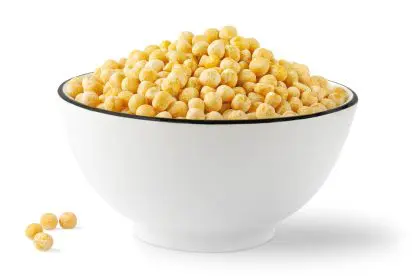The surprising nutrition powerhouses that can help you feel fuller longer while providing essential vitamins your body craves
When it comes to vegetables, many health-conscious individuals have learned to fear anything labeled “starchy.” These carbohydrate-rich plant foods have been unfairly vilified in our low-carb diet culture. However, nutrition experts are now highlighting how these versatile vegetables deliver a wealth of benefits that extend far beyond their carbohydrate content.
“I avoided potatoes and corn for years thinking they were basically empty calories,” admits a 42-year-old mother from Seattle. “Learning about their actual nutritional profiles completely changed my relationship with food.”
What makes a vegetable “starchy” anyway?
Starchy vegetables differ from their non-starchy counterparts primarily in their carbohydrate content and how they’re stored in the plant. They typically contain more calories and carbohydrates because they store energy in the form of starch—a complex carbohydrate that provides lasting energy for the human body.
This distinction matters because starchy vegetables digest differently in your system. The complex carbohydrates break down more slowly than simple sugars, providing sustained energy rather than quick spikes and crashes. This makes them particularly valuable for athletes, active individuals, and anyone looking for lasting energy throughout their day.
For adults following a standard 2,000-calorie daily diet, nutrition guidelines recommend consuming about 2.5 cups of vegetables each day, including approximately 5 cups of starchy vegetables per week. This balance ensures you receive the unique benefits of both starchy and non-starchy vegetables.
Why nutritionists are reclaiming starchy vegetables
Contrary to popular diet culture messaging, starchy vegetables offer significant nutritional advantages that justify their place in a balanced diet:
First, they provide substantial dietary fiber, which supports digestive health, helps manage blood sugar, and promotes feelings of fullness. Many Americans fall short of the recommended 25-38 grams of daily fiber, and starchy vegetables can help bridge this gap.
Second, they deliver essential micronutrients often lacking in modern diets. Many starchy vegetables are rich sources of potassium, vitamin C, B vitamins, and various antioxidants that support overall health and may help prevent chronic diseases.
Third, they contain resistant starch—a unique type of carbohydrate that functions similarly to fiber. Resistant starch passes through the small intestine undigested and ferments in the large intestine, where it acts as a prebiotic, feeding beneficial gut bacteria and potentially improving insulin sensitivity.
Finally, they’re incredibly versatile and satisfying, making healthy eating more sustainable. Their hearty texture and natural sweetness can satisfy cravings while providing superior nutrition compared to processed foods.
The top 5 starchy vegetables worth adding to your diet
- Sweet potatoes Sweet potatoes have earned their superfood status with good reason. A medium sweet potato provides 112 calories, 26.1 grams of carbohydrates, and nearly 4 grams of fiber. More impressively, it delivers 102% of your daily vitamin A needs in the form of beta-carotene, which supports immune function, vision, and skin health. Unlike regular potatoes, sweet potatoes rank lower on the glycemic index, meaning they have a milder effect on blood sugar levels. They also contain unique antioxidants called anthocyanins (particularly in purple varieties) that may help reduce inflammation. The versatility of sweet potatoes makes them easy to incorporate into meals—roast them as fries, mash them as a side dish, or even blend them into smoothies for added nutrition and natural sweetness.
- Beans and lentils While technically legumes, beans and lentils are often categorized as starchy vegetables in dietary recommendations. They stand out from other starchy vegetables due to their exceptional protein content, making them particularly valuable for plant-based diets. A half-cup serving of cooked lentils provides 113 calories, 19.3 grams of carbohydrates, and an impressive 9 grams of protein. More importantly, they deliver nearly 8 grams of fiber—about a third of the daily recommended amount for most adults. Black beans offer similar benefits, with a half-cup serving containing 120 calories, 22.5 grams of carbohydrates, 7.6 grams of protein, and 7.7 grams of fiber. The combination of protein and fiber makes beans and lentils particularly satiating, which helps with appetite control. Their low glycemic index also makes them ideal for blood sugar management, and research suggests regular consumption may help reduce cholesterol levels.
- Potatoes Much maligned in diet culture, potatoes deserve rehabilitation in the nutritional hierarchy. A medium potato contains 118 calories, 49 grams of carbohydrates, and 2.7 grams of fiber, along with significant amounts of potassium, vitamin C, and vitamin K. Potatoes contain a variety of phytonutrients that function as antioxidants. These compounds, including flavonoids, carotenoids, and phenolic acids, may help neutralize harmful free radicals and reduce inflammation. The potassium content in potatoes—about 11% of your daily needs in a medium potato—supports heart health by helping maintain healthy blood pressure levels. This essential mineral is chronically under-consumed in American diets. While potatoes have a higher glycemic index than some other starchy vegetables, this can be mitigated by preparation method (boiling rather than baking), eating the skin (which contains fiber), and pairing them with protein or healthy fats to slow digestion.
- Corn This versatile grain (botanically a fruit but nutritionally categorized as a starchy vegetable) offers more than just summertime enjoyment. A medium ear of sweet yellow corn contains about 60 calories, 14 grams of carbohydrates, and nearly 2 grams of fiber. Corn contains lutein and zeaxanthin, two antioxidants that support eye health by helping filter harmful blue light and protecting against age-related macular degeneration. Yellow corn varieties are particularly rich in these compounds. The insoluble fiber in corn supports digestive health by adding bulk to stool and promoting regular bowel movements. Meanwhile, the soluble fiber helps feed beneficial gut bacteria. Fresh corn has a naturally sweet flavor that can satisfy sweet cravings in a nutritious way. Try adding fresh or frozen corn kernels to salads, soups, or salsas for additional texture, flavor, and nutrition.
- Winter squash varieties The squash family offers numerous starchy options with impressive nutritional profiles. Butternut squash stands out with 82 calories and 6.6 grams of fiber per cup, along with substantial amounts of vitamins A and C. Pumpkin provides exceptional nutrition with just 49 calories per cup and impressive levels of vitamin A and vitamin C. Its seeds offer additional benefits, including protein, healthy fats, and minerals like magnesium and zinc. Acorn squash contains potassium, vitamin C, and B vitamins, with a natural sweetness that intensifies when roasted. Its smaller size makes it perfect for stuffing as a main dish. Other notable winter squash varieties include delicata, kabocha, and hubbard squash, each with their own unique nutritional advantages and culinary applications.
How to incorporate starchy vegetables wisely
For most healthy adults, starchy vegetables can play a valuable role in a balanced diet. However, those managing certain conditions such as diabetes or insulin resistance may need to be more strategic about their consumption. Here are some tips for maximizing the benefits of starchy vegetables:
Practice mindful portions. While nutritious, starchy vegetables are more calorie-dense than their non-starchy counterparts. A typical serving is about a half-cup of most starchy vegetables or a small potato.
Pair them with protein and healthy fats to slow digestion and minimize blood sugar impact. For example, top a baked potato with Greek yogurt and herbs instead of sour cream, or toss roasted sweet potatoes with olive oil, nuts, and seeds.
Consider cooking methods that maximize nutrition. Boiling potatoes rather than baking or frying them lowers their glycemic index. Cooling starchy vegetables after cooking and then reheating them increases their resistant starch content.
Preserve the skin when appropriate (such as with potatoes) to increase fiber intake. The skin contains concentrated amounts of nutrients and fiber that help slow digestion.
Explore varied preparation methods to keep things interesting. Mashing, roasting, steaming, and even adding to smoothies (in the case of sweet potatoes) can provide different textures and flavor profiles.
When to seek personalized nutrition advice
While starchy vegetables offer numerous health benefits for most people, those with specific health conditions may benefit from more personalized guidance. Individuals with diabetes, insulin resistance, or digestive disorders like irritable bowel syndrome might need tailored recommendations about types and amounts of starchy vegetables that work best for their bodies.
A registered dietitian can provide customized advice based on your specific health status, goals, and dietary preferences. They can help you determine the optimal balance of starchy and non-starchy vegetables for your unique situation.
Athletes and highly active individuals may actually benefit from increasing their starchy vegetable intake to support energy needs and recovery. Meanwhile, those with more sedentary lifestyles might need to be more mindful of portions while still incorporating these nutritious foods.
The renewed appreciation for starchy vegetables represents a welcome shift away from overly restrictive eating patterns toward more balanced, sustainable approaches to nutrition. By understanding the unique benefits these foods offer, you can make informed choices that support your health goals while still enjoying a diverse and satisfying diet.
Rather than fearing these carbohydrate-containing plants, consider them valuable tools in your nutritional arsenal—providing energy, fiber, and essential nutrients that contribute to overall wellbeing in ways that processed carbohydrates simply cannot match.













